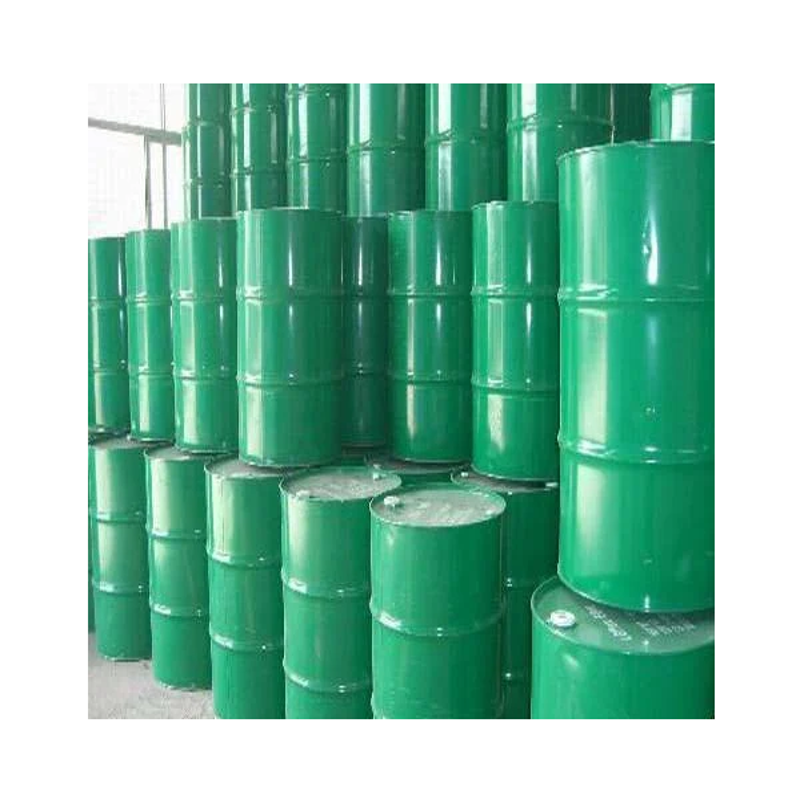-
Categories
-
Pharmaceutical Intermediates
-
Active Pharmaceutical Ingredients
-
Food Additives
- Industrial Coatings
- Agrochemicals
- Dyes and Pigments
- Surfactant
- Flavors and Fragrances
- Chemical Reagents
- Catalyst and Auxiliary
- Natural Products
- Inorganic Chemistry
-
Organic Chemistry
-
Biochemical Engineering
- Analytical Chemistry
-
Cosmetic Ingredient
- Water Treatment Chemical
-
Pharmaceutical Intermediates
Promotion
ECHEMI Mall
Wholesale
Weekly Price
Exhibition
News
-
Trade Service
Boxi Village, located in the south of Pingdi Town, Renhe District, Panzhihua City, at the junction of Sichuan and Yunnan, is located in a remote area, and currently has 22 poor households, which is a provincial poor village
.
According to the schedule, Boxi Village will achieve complete poverty alleviation by the end of this year, with a tight time and heavy tasks, but since the introduction of photovoltaic power generation, the local people have a head, and poverty alleviation has also seen hope
.
Bao Lirong is a poor household in Boxi Village, after the introduction of "photovoltaic poverty alleviation", her family installed a 3KW photovoltaic power generation system connected to the national grid, and the annual power generation system is expected to generate 4600 degrees
.
This photovoltaic power generation system does not occupy any land resources of Bao Lirong's family, and uses the mode of spontaneous self-consumption surplus electricity to sell excess electricity to the national grid to obtain economic benefits, and it is expected that this photovoltaic power generation system can increase the income of their family by more than
3,500 yuan this year.
Since the 18th National Congress of the Communist Party of China, poverty alleviation and development work has been raised to a new height of governance, and the state has clearly put forward the goal
of achieving comprehensive poverty alleviation by 2020.
Panzhihua has 2,700 hours of sunshine throughout the year, belongs to a class of light resource areas, and has the resource conditions
for implementing photovoltaic poverty alleviation.
Photovoltaic poverty alleviation technology has matured, and it also has the conditions
to be promoted among poor farmers.
On the one hand, it is suitable for promotion in rural areas, there is a sun there is income, the income is stable, the time is up to 25 years, and the popularity is wide
.
On the other hand, its promotion risk is not great
.
At the same time, it can also improve the increasingly prominent living environment problems, reduce the consumption of non-renewable resources, and there is no market risk and technical risk
.
The advantages of photovoltaic poverty alleviation are also more significant
than those of traditional models.
Through the implementation of the innovative model of "photovoltaic +", Panzhihua combines with precise poverty alleviation, housing renovation, and financial services, and implements photovoltaic poverty alleviation according to local conditions, realizing the transformation
from "blood transfusion" poverty alleviation to "hematopoietic" poverty alleviation.
Promoting photovoltaic power generation into rural households is in line with a number of national development plans, conforms to the new trend of energy Internet development, is suitable for the development needs of rural poor areas, and creates favorable conditions for the development of energy Internet, and also meets the national poverty alleviation development plan and requirements
.
On the whole, the implementation of photovoltaic precision poverty alleviation projects and the creation of photovoltaic application demonstration areas are in line with the national policy orientation
of vigorously developing new energy.
Therefore, photovoltaic precision poverty alleviation is a new way to alleviate poverty, and it is also a new field to expand the photovoltaic market, which is conducive to increasing income and employment for the people, and is conducive to the change of people's lifestyle, with obvious characteristics
of "hematopoietic poverty alleviation".
At present, the selection of photovoltaic materials mainly includes thin film and crystalline silicon
.
The cost per KW of thin-film photovoltaic power generation is about 12,790 yuan
.
The built-up cost per KW of crystalline silicon photovoltaic power generation is about 8900 yuan
.
Panzhihua Renhe District has signed a cooperation agreement with photovoltaic power generation enterprises, each poor household in accordance with the standard of 3KW for construction, 3KW household distributed generation system according to the government to poor farmers per household to support the standard of 20,000 yuan, poor households contribute 6,400 yuan of cost to build 3KW power station is expected to recover the cost in the second year, and can increase stable economic income by about 4,000 yuan per year in the future, with a yield of about 15%, taking into account the factors of attenuation and maintenance costs of photovoltaic power generation equipment.
It is expected to make a profit of more than 97,000 yuan in 25 years, with obvious economic benefits
.
"Photovoltaic +" precision poverty alleviation into the countryside to help farmers increase income, poverty alleviation effect is remarkable, not only changed the previous poverty alleviation model, but also conducive to farmers have stable economic returns, but also greatly reduced environmental damage and pollution
.
Like Bao Lirong, the 12 rooftop distributed photovoltaic power generation systems in Pingdi Town and 13 in Tongde Town that are currently being implemented will be completed by the end of this year, and will increase the income of each poor household by more than
3,500 yuan after completion and operation.
Boxi Village, located in the south of Pingdi Town, Renhe District, Panzhihua City, at the junction of Sichuan and Yunnan, is located in a remote area, and currently has 22 poor households, which is a provincial poor village
.
According to the schedule, Boxi Village will achieve complete poverty alleviation by the end of this year, with a tight time and heavy tasks, but since the introduction of photovoltaic power generation, the local people have a head, and poverty alleviation has also seen hope
.
Bao Lirong is a poor household in Boxi Village, after the introduction of "photovoltaic poverty alleviation", her family installed a 3KW photovoltaic power generation system connected to the national grid, and the annual power generation system is expected to generate 4600 degrees
.
This photovoltaic power generation system does not occupy any land resources of Bao Lirong's family, and uses the mode of spontaneous self-consumption surplus electricity to sell excess electricity to the national grid to obtain economic benefits, and it is expected that this photovoltaic power generation system can increase the income of their family by more than
3,500 yuan this year.
Since the 18th National Congress of the Communist Party of China, poverty alleviation and development work has been raised to a new height of governance, and the state has clearly put forward the goal
of achieving comprehensive poverty alleviation by 2020.
Panzhihua has 2,700 hours of sunshine throughout the year, belongs to a class of light resource areas, and has the resource conditions
for implementing photovoltaic poverty alleviation.
Photovoltaic poverty alleviation technology has matured, and it also has the conditions
to be promoted among poor farmers.
On the one hand, it is suitable for promotion in rural areas, there is a sun there is income, the income is stable, the time is up to 25 years, and the popularity is wide
.
On the other hand, its promotion risk is not great
.
At the same time, it can also improve the increasingly prominent living environment problems, reduce the consumption of non-renewable resources, and there is no market risk and technical risk
.
The advantages of photovoltaic poverty alleviation are also more significant
than those of traditional models.
Through the implementation of the innovative model of "photovoltaic +", Panzhihua combines with precise poverty alleviation, housing renovation, and financial services, and implements photovoltaic poverty alleviation according to local conditions, realizing the transformation
from "blood transfusion" poverty alleviation to "hematopoietic" poverty alleviation.
Promoting photovoltaic power generation into rural households is in line with a number of national development plans, conforms to the new trend of energy Internet development, is suitable for the development needs of rural poor areas, and creates favorable conditions for the development of energy Internet, and also meets the national poverty alleviation development plan and requirements
.
On the whole, the implementation of photovoltaic precision poverty alleviation projects and the creation of photovoltaic application demonstration areas are in line with the national policy orientation
of vigorously developing new energy.
Therefore, photovoltaic precision poverty alleviation is a new way to alleviate poverty, and it is also a new field to expand the photovoltaic market, which is conducive to increasing income and employment for the people, and is conducive to the change of people's lifestyle, with obvious characteristics
of "hematopoietic poverty alleviation".
At present, the selection of photovoltaic materials mainly includes thin film and crystalline silicon
.
The cost per KW of thin-film photovoltaic power generation is about 12,790 yuan
.
The built-up cost per KW of crystalline silicon photovoltaic power generation is about 8900 yuan
.
Panzhihua Renhe District has signed a cooperation agreement with photovoltaic power generation enterprises, each poor household in accordance with the standard of 3KW for construction, 3KW household distributed generation system according to the government to poor farmers per household to support the standard of 20,000 yuan, poor households contribute 6,400 yuan of cost to build 3KW power station is expected to recover the cost in the second year, and can increase stable economic income by about 4,000 yuan per year in the future, with a yield of about 15%, taking into account the factors of attenuation and maintenance costs of photovoltaic power generation equipment.
It is expected to make a profit of more than 97,000 yuan in 25 years, with obvious economic benefits
.
"Photovoltaic +" precision poverty alleviation into the countryside to help farmers increase income, poverty alleviation effect is remarkable, not only changed the previous poverty alleviation model, but also conducive to farmers have stable economic returns, but also greatly reduced environmental damage and pollution
.
Like Bao Lirong, the 12 rooftop distributed photovoltaic power generation systems in Pingdi Town and 13 in Tongde Town that are currently being implemented will be completed by the end of this year, and will increase the income of each poor household by more than
3,500 yuan after completion and operation.







